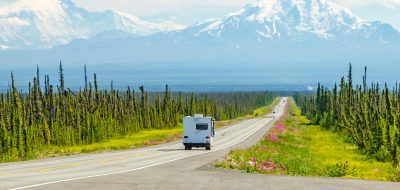Once upon a time, the story goes, an Asian nomad filled his goat-stomach carry-all with fresh milk from his goats and set off on a day’s journey, walking so he left no carbon footprint. Upon opening his bag after a long day on the road, to his surprise the milk had turned into a firm white substance (curd) leaving a watery liquid (whey). Tired and hungry, and having no other alternative, he drank the liquid and tasted the white stuff and found it to be quite tasty (anything edible in those days was considered tasty).
And so the nomad discovered cheese, maybe as long as 7,000 years ago. Basic cheese, made from curdling milk, is activated by an enzyme called rennet found in a young bovine?s stomach. This was a valuable discovery, since the resulting curds would keep for consumption later, whereas fresh milk would soon spoil. Later, the addition of salt preserved the curds for even longer periods and as the cheese ripened or aged, stronger and more desirable flavors developed.
Stone tablets thousands of years old depict milking cows and curdling of the milk, and the Old Testament mentions cheesemaking. The Romans elevated the art and skill of cheesemaking to a high standard, creating cheeses with unique flavors and characteristics.
In the middle ages, monks put more creativity into cheesemaking, with many of their creations still popular today. Cooperative dairies formed, the earliest in 1267, where entire villages combined their milk and labor and shared in the final cheese production.
The original settlers at Plymouth colony brought their cheesemaking skills and tools with them and began making cheese in the early 1600s. By the 1900s large companies like Kraft produced large quantities of machine-made cheese. However, during the past couple decades, aged artisanal cheeses (natural cheeses made by hand in small batches using traditional techniques) have led to a revival of farmhouse, or farmstead cheeses, made by local farms and cooperatives and noted for their distinctive flavors and characteristics.
Many farmstead cheesemakers welcome visitors, and road touring to cheesemakers can be as enjoyable as touring wineries. They provide factory tours, samples, and on-site sales, and enough room to park an RV. Some, like Tillamook Cheese in Tillamook, Oregon and Shelburne Farms in Shelburne, Vermont have quite lavish visitor-friendly facilities.
Shelburne is a 1,400-acre working farm, a National Historic Landmark, and nonprofit environmental and agricultural education organization. All profits from their cheese products support their conservation, environmental, and agricultural educational programs. Shelburne is certified for Humane Farm Animal Care and the herd and pastures are managed ecologically and sustainably, with all the milk used to make their cheeses coming from their own Brown Swiss cows.
I tasted–in order by age–their mild cheddar, followed by their one year sharp, two year Extra Sharp, and three year Premium Aged, for which my mouth waters whenever I think of it.
The Cabot Cheese Company was founded by 94 Cabot area dairy farmers as a cooperative to sell butter in 1919. Cabot hired its first cheese maker in 1930 when cows still outnumbered people in Vermont. The rest is history as Cabot cheddar cheeses have won first prize awards in cheese competitions around the world. At their visitor center in Cabot Village near Montpelier, Vermont, you can enjoy plenty of free samples and purchase your favorite cheddar.
One of my favorite cheddars is produced by The Grafton Village Cheese Company in Grafton, Vermont founded in 1892 to process surplus milk from local dairy farmers into cheese. Grafton cheddars have won many awards around the world, like their prize-winning Classic Reserve cheddar (my mouth is watering), an extra-aged cheese that has won four gold trophies from the International Fancy Food Show.
The big three of cheesemaking are the states of Vermont, Wisconsin, and California, but you can find cheesemakers just about anywhere there are cows (or goats or yaks) and milk.
And wherever you happen to be, make a Google search with the words: cheesemakers tours Iowa (or whatever state you are in). Try also www.ilovecheese.com.
Cheesy Tidbits
- The USA produces more cheese than any other country.
- Unwrap your cheese when you uncork your wine and leave sit a half hour before serving. Both need to breathe to bring out the full characteristics. Refrigerated cheeses need 1 1/2 to 2 hours.
- Serve strong cheddars and other tangy cheeses with full-bodied red wines, milder cheeses, like camembert and brie, with white wines.
- Cheese has living organisms and should not be stored in air-tight containers preventing air circulation, though enclosed to prevent drying out and absorbing flavors from other foods stored nearby.
- Store blue cheeses tightly wrapped to prevent errant mold spores from spreading to other foods
- There are more than 600 kinds of cheese with over 2,000 names.
- Cheeses are not naturally colored. An additive gives yellow cheeses their color. Some white cheeses are bleached.
- Skunks love cheddar cheese. No kidding.





